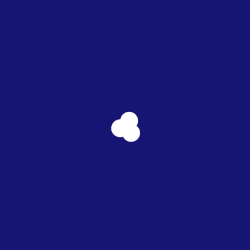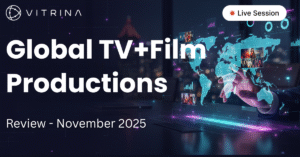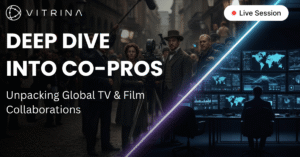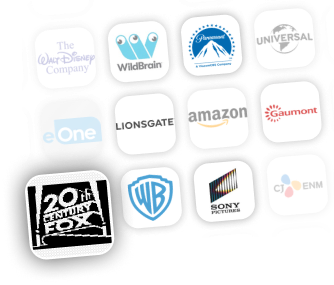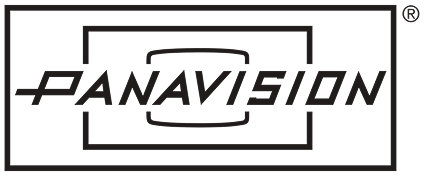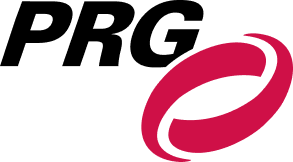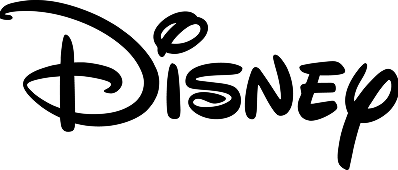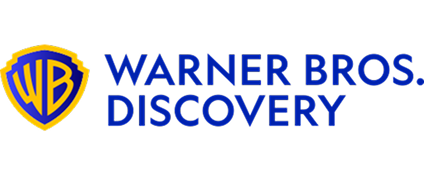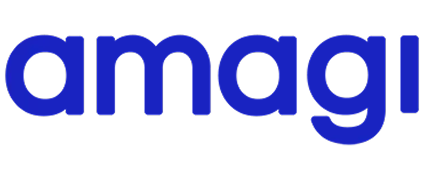Introduction
Hey everyone, it’s Neil here. Are you fascinated by the captivating visuals of anime?
Whether it’s the classic charm of 2D or the dynamic depth of 3D, mastering the 2D & 3D Anime Style can feel like a huge mountain to climb.
You see these incredible shows and movies, and you wonder, “How can I even begin to create something that looks that good?” Maybe you’re a creator struggling to choose the right aesthetic, a producer weighing budget against visual impact, or just someone passionate about understanding this unique art form.
Trust me, you’re not alone. The world of anime production is complex, but breaking into it, or simply understanding it better, is totally achievable. In this post, I’m going to walk you through the essential steps to understand, differentiate, and start your journey with 2D and 3D anime styles.
We’ll demystify the process and give you actionable insights.
Table of content
- Introduction
- Key-Takeaways
- Step 1: Understanding Traditional 2D Anime Style
- Step 2: Exploring the World of 3D Anime Style
- Step 3: 2D vs. 3D – The Critical Differences for Creators
- Step 4: Your Toolkit for Creating 2D & 3D Anime Style Content
- Step 5: Embracing the Future and Hybrid Approaches
- Conclusion
- FAQs
Key Takeaways
| Aspect | Key Insight |
|---|---|
| Understanding the Core | Grasp the distinct visual characteristics and emotional impact of both 2D and 3D anime styles. |
| Production Differences | Learn how workflows, tools, and team skills differ significantly between 2D and 3D anime. |
| Choosing Your Style | Make informed decisions based on your project’s story, budget, timeline, and target audience. |
| Essential Techniques | Discover key artistic techniques like cel shading for 3D and expressive line art for 2D. |
| Future Trends | Stay ahead by understanding the rise of hybrid approaches and new technologies shaping anime. |
Finding Anime Artists & Studios Made Easy?

Step 1: Understanding Traditional 2D Anime Style
When you think “anime,” chances are the classic 2D style springs to mind. It’s the bedrock of the industry, with a rich history and a very distinct look. But what really defines it?
What Makes 2D Anime Unique?
It’s not just about big eyes and spiky hair, though those are famous tropes! Traditional 2D Anime Style is characterized by several key elements:
- Expressive Line Art: Strong, clean lines define characters and environments. The weight and quality of lines convey emotion and movement.
- Flat Color Shading: Typically, colors are applied in flat layers with minimal blending, creating a distinct, graphic look. Shadows are often hard-edged.
- Limited Animation: To save on production costs and time, 2D anime often uses techniques like holding cels, animating only parts of a character (like the mouth), and dynamic still shots. This isn’t a flaw; it’s an art form in itself!
- Focus on Character Expression: Exaggerated facial expressions and body language are hallmarks, conveying a wide range of emotions effectively.
Think about iconic series like Dragon Ball Z or Studio Ghibli films. Their power comes from mastering these 2D principles. It’s an art form that prioritizes emotional impact and stylistic storytelling over photorealism.
Pros and Cons of Going 2D
Choosing 2D comes with its own set of advantages and challenges:
- Pros: Strong artistic control, established workflows, often a nostalgic appeal, can be less technically demanding in terms of raw processing power compared to complex 3D.
- Cons: Can be very labor-intensive (frame-by-frame drawing), scaling up production requires significant manpower, complex camera movements can be challenging.
Understanding these aspects is crucial before you commit your project, or your learning efforts, to this path. For many, the artistic freedom and unique aesthetic of 2D are well worth the effort. And platforms like Vitrina’s solutions can help you find the specialized 2D artists and studios you need.
Step 2: Exploring the World of 3D Anime Style
Now, let’s shift gears to the increasingly popular 3D Anime Style.
This isn’t about ditching the anime aesthetic; it’s about translating it into a three-dimensional space. And believe me, when done right, it’s absolutely breathtaking.
What is 3D Anime Style Anyway?
3D anime, often utilizing a technique called “cel shading” (or “toon shading”), aims to replicate the look and feel of 2D drawings using 3D models and computer graphics. The goal isn’t usually photorealism, but rather to bring that classic anime charm into a world with depth, dynamic camera movements, and complex character rigging.
- Cel Shading: This is key. It involves rendering 3D models with flat colors and distinct outlines to mimic the look of traditional 2D animation cels.
- Detailed 3D Models: Characters and environments are built as 3D assets, allowing for reuse and complex interactions.
- Dynamic Camerawork: One of the biggest advantages! 3D allows for sweeping camera movements, complex action sequences, and perspectives that would be incredibly difficult or expensive in 2D.
- Integration with VFX: 3D naturally lends itself to stunning visual effects, from magical attacks to intricate mechanical designs.
Series like Beastars or movies like Spider-Man: Into the Spider-Verse (though not purely anime, it heavily borrows from the style) showcase the incredible potential of 3D when it embraces the anime spirit.
Pros and Cons of Venturing into 3D
Thinking of using 3D for your anime-style project? Here’s what to consider:
- Pros: Highly dynamic scenes, easier to reuse assets, potentially faster for certain types of animation once models are built, excels at complex mechanical or environmental details.
- Cons: Can be technically complex to set up, achieving the “anime feel” in 3D (avoiding the “plastic” look) requires skill and specific techniques, high initial investment in model creation and rigging, demanding rendering power.
The learning curve for 3D anime can be steep, but the results can open up new dimensions of storytelling. It’s a fantastic option if your project demands that extra layer of dynamism.
Step 3: 2D vs. 3D – The Critical Differences for Creators
Alright, you understand the basics of both. Now for the big question: which one is “better”?
Spoiler: neither. It all depends on your project, your resources, and your vision. Let’s break down the key differences to help you decide.
Aesthetic and Audience Appeal
2D often evokes nostalgia and a handcrafted feel. It’s the “classic” anime look that many fans grew up with and adore. It excels at conveying raw emotion through expressive, stylized drawings.
3D, when done well in an anime style, can offer a fresh, modern take.
It can provide a sense of scale and spectacle that’s harder to achieve in 2D. However, if not executed carefully, it can sometimes feel “off” to purists if it doesn’t nail the cel-shaded aesthetic.
Production Workflow, Tools, and Skills
This is where things diverge significantly.
| Aspect | 2D Anime Style | 3D Anime Style |
|---|---|---|
| Core Skills | Drawing, illustration, in-betweening, traditional animation principles. | 3D modeling, texturing, rigging, 3D animation, lighting, rendering, compositing. |
| Typical Software | Clip Studio Paint, Toon Boom Harmony, OpenToonz, Krita. | Blender, Maya, 3ds Max, Cinema 4D (often with specialized cel-shading plugins/shaders). |
| Team Structure | Animators, background artists, in-betweeners, cleanup artists. | Modelers, riggers, 3D animators, lighters, texture artists, compositors. |
The talent pool and the pipeline are very different. You need to consider what skills you have or can access.
Budget and Timeline Realities
There’s a common misconception that 3D is always more expensive. Not necessarily.
While initial asset creation (modeling, rigging) in 3D can be costly and time-consuming, animating those assets for multiple scenes can sometimes be faster than redrawing everything frame-by-frame in 2D.
For 2D, while software costs might be lower, the sheer volume of manual labor for a large project can drive up costs and extend timelines.
The truth is, both can be expensive. Your budget will heavily influence your choice, as will your project’s length and complexity. Using a platform to track projects, like the Vitrina Project Tracker, can be invaluable for managing these complexities regardless of style.
Streamline Your Next Anime Production?

Step 4: Your Toolkit for Creating 2D & 3D Anime Style Content
Feeling inspired to create?
Awesome! Let’s talk about what you’ll need to get started, whether you’re leaning towards 2D, 3D, or even a mix.
Essential Software (A Quick Overview)
I won’t dive deep into tutorials here, but knowing the industry standards helps:
For 2D Anime Style:
- Clip Studio Paint (CSP): Hugely popular, especially in Japan. Great for line art, coloring, and even has animation features.
- Toon Boom Harmony: An industry powerhouse for series production. Robust, but can have a steeper learning curve and cost.
- OpenToonz: Free, open-source, and surprisingly powerful. Used by some professional studios!
- Krita: Another fantastic free and open-source option, excellent for drawing and painting with decent animation tools.
For 3D Anime Style (Cel-Shaded):
- Blender: Free, open-source, and incredibly versatile. Its Eevee real-time render engine is fantastic for cel-shading. Huge community support.
- Autodesk Maya: An industry standard for 3D animation, very powerful but comes with a subscription cost. Often used with custom shaders for anime.
- Unity/Unreal Engine: While game engines, they are increasingly used for creating animated content, offering real-time rendering and robust tools for cel-shading.
Don’t get bogged down by tools at first. Pick one, learn its basics, and focus on the artistic principles.
Tips for Nailing the Anime Aesthetic
Regardless of dimension, certain principles help achieve that “anime” feel:
- Study the Masters: Watch a LOT of anime. Analyze how characters move, how emotions are expressed, how scenes are framed. Don’t just watch; dissect!
- Master Expressive Anatomy: Even if stylized, understanding basic anatomy helps create believable (even if exaggerated) characters.
- Line Weight is Your Friend (Especially in 2D): Varying line thickness adds depth and emphasis.
- Color Theory for Emotion: Anime uses color strategically to set moods and highlight moments.
- For 3D, Focus on Shaders: Your cel shader is your best friend. Tweak it until it sings. Pay attention to how outlines work.
- Pacing and Timing: Anime has a unique rhythm. Study how it uses pauses, quick cuts, and dramatic slow-motion.
Step 5: Embracing the Future and Hybrid Approaches
The world of 2D & 3D Anime Style is not static. It’s constantly evolving, driven by technology and creative ambition. What’s next?
The Rise of Hybrid Productions
One of the most exciting trends is the increasing use of hybrid animation.
This involves blending 2D and 3D elements seamlessly within the same production.
You might see 2D hand-drawn characters interacting with detailed 3D backgrounds or vehicles. Or, 3D character models might be used for complex action sequences, while close-ups and emotional moments are handled in 2D.
Studios like Ufotable (Demon Slayer) are masters of this, creating visually stunning works that leverage the strengths of both dimensions.
This approach often offers the best of both worlds but requires careful planning and a skilled team that understands both pipelines.
Technological Advancements to Watch
- AI in Animation: AI tools are emerging to assist with tasks like in-betweening, colorization, and even background generation. This could speed up tedious parts of the process, freeing artists for more creative work.
- Real-time Rendering: Game engines and real-time renderers like Blender’s Eevee are making it faster and more interactive to create 3D anime, reducing iteration times.
- VR/AR in Creation: Some artists are exploring VR tools for sculpting and animating, offering a more intuitive way to work in 3D space.
Staying curious and adaptable is key. The core principles of good storytelling and appealing art will always matter, but the tools and techniques will continue to evolve.
How Vitrina Powers Your Anime Projects
Navigating the complex world of 2D & 3D Anime Style production, from finding the right talent to managing global teams and tracking project progress, can be a monumental task.
That’s where a platform like Vitrina comes in. Vitrina is designed to connect creators, producers, and studios with a global network of specialized vendors, including animators, artists, and production houses skilled in both 2D and 3D anime.
Whether you’re looking to outsource a specific part of your animation pipeline, find co-production partners, or gain market intelligence on the latest anime trends and deals, Vitrina provides the tools and connections to streamline your workflow and bring your anime vision to life more efficiently.
Conclusion
So there you have it – a deep dive into the vibrant worlds of 2D & 3D Anime Style. We’ve covered the defining characteristics, the pros and cons, the tools of the trade, and what the future might hold. Remember, there’s no single “right” way. The best style is the one that serves your story, fits your resources, and ignites your passion.
The key is to start learning, start experimenting, and don’t be afraid to make mistakes. Whether you’re drawn to the timeless appeal of 2D or the dynamic possibilities of 3D, the journey of creating or appreciating anime is incredibly rewarding.
What’s the first strategy you’re going to try? Or which style resonates most with you? Let me know in the comments.
Ready to take your anime projects to the next level? Don’t let the complexities of production slow you down. Discover talent, manage projects, and get insights. Sign up for Vitrina today and connect with the resources you need to succeed in the global media and entertainment landscape!
Frequently Asked Questions
For absolute beginners in art, 2D might be more accessible as it focuses on fundamental drawing skills. Software like Krita or Clip Studio Paint (with its animation features) can be a good starting point. However, if you’re already comfortable with 3D software for other purposes, learning to apply cel-shading techniques in Blender could be a viable path. It depends on your existing skills and interests!
Costs vary wildly based on length, quality, team size, and region. A very short, simple independent 2D animation might cost a few hundred to a few thousand dollars. A professional-quality 3D anime short could range from tens of thousands to hundreds of thousands. There’s no single answer, but 3D generally has higher upfront asset creation costs, while 2D can become expensive due to labor hours for longer projects.
Absolutely! This is a growing trend. Many professional anime productions seamlessly blend 2D characters with 3D backgrounds, vehicles, or complex effects. It requires careful planning and a team skilled in both, but it can lead to stunning visual results.
You’ll need proficiency in 3D modeling (characters, props, environments), texturing (especially creating stylized textures for cel-shading), rigging (creating digital skeletons for characters), 3D animation, lighting, and rendering. Strong understanding of cel-shading techniques and a good eye for the traditional anime aesthetic are crucial to make 3D look “anime” and not just generic 3D.
